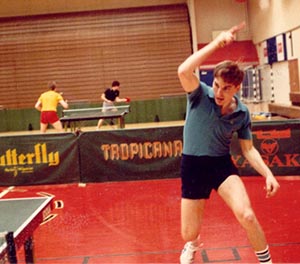Breakability, Playability, and Financiability of Plastic Balls
There are regular complaints about how the new plastic balls (which aren't so new anymore) break more easily than celluloid ones. Someone posted a note about this last night, and I responded as follows, about my experiences at the North America Teams – with the "breaking point" observation.
Most of the new plastic balls break more often than the celluloid ones. All you can do is call a let when it happens. One thing I noticed - I coached junior teams where the players were mostly 8-10 years old, and I don't remember them breaking a single ball. But I kept hearing from others, like you, that the balls kept breaking. Adults smash harder, and there's apparently a "breaking point" speed where they break too often.
Most of them also don't play as well as celluloid, though some of them are pretty good. There's going to be a titanic struggle at some point between the forces of seamed and unseamed balls – I'm guessing that eventually it'll be one or the other.
There are always going to be suspicions that the switch to plastic balls was more commercial than out of necessity due to the flammability of celluloid (which causes shipping and insurance difficulties). Perhaps it was both. Switching to plastic balls both enriches those who have the patents for them, and increases the number sold since they break more often. (I have no idea if they knew that part in advance.) However, I don't claim to be an expert on this.


 Photo by Donna Sakai
Photo by Donna Sakai


